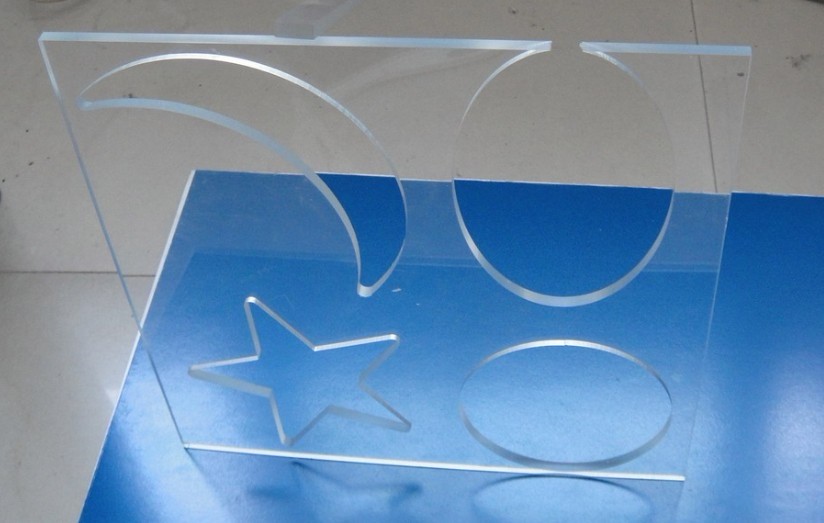 Physical characteristics of acrylic/plexiglas
Physical characteristics of acrylic/plexiglas
Transparency - In colourless form Acrylic/Plexiglas is as transparent as the finest optical glass. Its total white light transmittance is 92%, the highest transmittance physically possible of any material.
Resistance to Breakage -Acrylic/Plexiglas sheet has from 6 to 17 times greater impact resistance than glass depending on the specific type of acrylic used. When subjected to blows beyond its resistance, acrylic sheet breaks into large relatively dull edged pieces which disperse at low velocity, due to the light weight of the material.
Weather Resistance - Many years of outdoor exposure of acrylics in a wide variety of applications has proved its weather resistance, which cannot be matched by any other transparent plastic[plastic?:Plastic sample cutting machine] material.
Chemical Resistance - Acrylic/Plexiglas has excellent resistance to most chemicals, including solutions of inorganic alkalis and acids such as ammonia and sulphuric acid, and most aliphatic hydrocarbons. It is attacked however by the following chemicals: PetrolChlorinated hydrocarbons such as methylene chloride, a solvent cement widely used, and carbon tetrachloride. Aromatic solvents such as turpentine, benzene, and toluene. Ethyl and methyl alcohol. Organic acids such as acetic acid, phenols, and lysol. Lacquer thinners and other esters, ketones, and ethers.
Light Weight - Acrylic sheet is less than half the weight of glass Dimensional Stability - Acrylic/Plexiglas sheet is very mechanically stable thereby reducing the effects of shrinking and deterioration over long periods of use.
Combustibility - Acrylic/Plexiglas is a combustible thermoplastic and should be treated as an ordinary combustible material such as wood. The self ignition temperature (spontaneous combustion) of acrylic is between 454 degree C and 465 degree C. The temperature at which the material will ignite in the presence of a flame is between 288 degree C and 300 degree C. While the ignition temperatures of acrylic are higher than that of most woods, it burns vigorously and generates heat rapidly when involved in fire. The primary products of acrylic combustion are carbon monoxide and carbon dioxide, however, burning acrylic plastic does not produce either excessive quantities of smoke or gasses more toxic than those produced by burning wood or paper[paper?:paper sample maker cutting machine]. Heat Resistance - The maximum "continuous service temperature" of Acrylic/Plexiglas is between 80 degrees C and 90 degrees C depending on the particular use. This means that while the material can withstand higher temperatures for very short periods of time, it will soften and lose its form or shape if subjected to these higher temperatures for any period of time. Even though Acrylic/Plexiglas responds to heat, it is not affected by cold, and will not become cracked or brittle in cold weather.
Electrical Properties - Acrylic/Plexiglas is affected only to a minor degree by weathering or moisture. Its surface resistivity is higher than that of most other materials, and makes an ideal insulator. Fabrication - Acrylic/Plexiglas can be sawn, drilled, and machined like wood or soft metals.The forming temperature for Acrylic/Plexiglas Extruded is approx. 150 °C, for Acrylic/Plexiglas Cast approx. 160 °C.